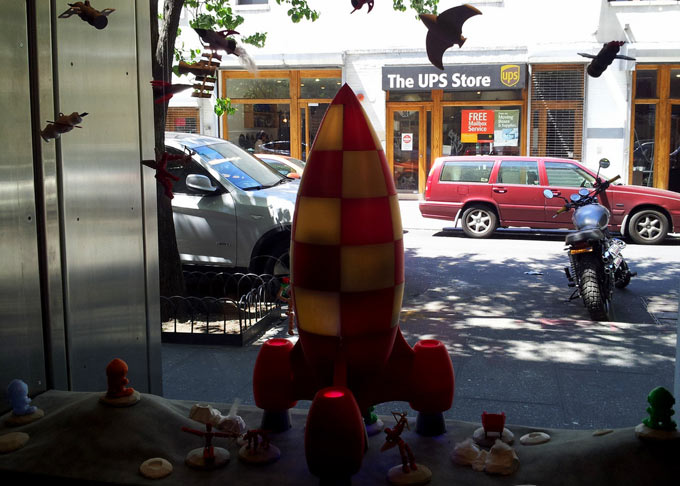 The other day I was reading an article on Forbes.com about new innovations that could potentially kill the sales of major household brands. It was a first in a series by Robin Lewis and he makes the argument that the sheer number of competitive offerings (including private label alternatives), plus the impact of the Internet and globalization – and the hyper-competitive selling environment those things helped create – foretell the death of mega brands.
The other day I was reading an article on Forbes.com about new innovations that could potentially kill the sales of major household brands. It was a first in a series by Robin Lewis and he makes the argument that the sheer number of competitive offerings (including private label alternatives), plus the impact of the Internet and globalization – and the hyper-competitive selling environment those things helped create – foretell the death of mega brands.
One point I think the author missed that could either be an opportunity or another nail in the coffin for those brands is the impact of 3D printing. Like books, music, and movies before, products are going digital. Offering products in 3D printable format could help big brands remain relevant. Those who don’t won’t enjoy digital shelf space, which could quickly become as important as their position on a store shelf or views on eCommerce websites.
A few weeks ago noted futurist, Ray Kurzweil wrote a piece for CNN, and among his five predictions was that “by the early 2020?s we’ll print out a significant fraction of the products we use.” In fact, he sees the next decade as the “golden era” of 3D printing. Not only does it have the potential to impact fashion and medicine (as mentioned in the article), but if he’s right, could change our notion of how many consumer goods are produced.
Just who is Ray Kurzweil and why do his opinions matter? I first heard about him in the early 1990’s when I was working for Xerox, where he was consulting on optical character recognition software. By then he’d already invented the first CCD flatbed scanner, text-to-speech devices for the blind, speech recognition software (he’s the “grandfather” of Siri), and a line of music synthesizers. He’s gone on to an amazing career in technology and is currently the Chief of Engineering at Google.
It was also during the early 1990’s that he began making predictions about the future. He’s continued to do so since, and his record of accuracy is astounding. Perhaps his biggest and most well-known prediction is that of the “singularity” – an idea which supposes that the barrier between man and machine will eventually dissolve. Kurzweil predicts this will happen in the year 2045. Of all of Kurzweil’s predictions, it’s certainly the one that’s the most controversial, in part because of perceived moral and spiritual implications. To some, it conjures up fears of a Borg-like evolution of mankind.
In the late 1700?s, the philosopher Arthur Schopenhauer said, “All truth passes through three stages. First, it is ridiculed. Second, it is violently opposed. Third, it is accepted as being self-evident.” Depending on who you ask, you’re likely to get any one of those reactions to Kurzweil’s predictions, which more often than not are eventually accepted as truth.
So when I posted the Forbes article on social media and alluded to Kurzweil’s predictions about 3D printing and how it could impact major brands, I got some of what Schopenhauer would have expected – ridicule and opposition. One response was particularly telling. The commenter said, “You mean my cotton underwear or my tomato paste or my ceramic dishes or my cast iron cookware? Go Ray, go!”
In the past I’ve written about how and why retailers in practically every niche, from books, automotive parts, home improvement, wireless and outdoor, to generalists like grocery and mass marketers could make a case for offering 3D printing services online and in their stores. I’ve mentioned dozens of products that can be 3D printed now, from book sleeves, tire stem caps, light switch plates, smartphone cases and fishing lures, to cooking utensils and hair brushes. I recently started a new series where I’m focusing on consumer brands themselves and how retail suppliers like Newell Rubbermaid, with 40+ brands, could provide the digital products for many of those categories.
As much as I wanted to respond to my (and Ray’s) critic, saying that fabrics, food, ceramics, and metals are already being 3D printed, I found myself dwelling on the commenter’s underlying point. I’ve spent so much time talking about what will be 3D printable, that I haven’t given much thought to what won’t be 3D printed. Certainly there are things which will never be, right?
I thought one way to illustrate some of those products would be to do a quick review of the top sellers on Amazon. Aside from Walmart, they distribute more products than just about anybody. Here’s a list of their top selling categories and items. As of today, some of those include:
Toys and Games
- Cards Against Humanity (card game)
- Rainbow Loom (bracelet making kit)
- Syma S107 R/C Helicopter (remote controlled helicopter)
Electronics
- Google Chromecast (streaming video device)
- Kindle Fire HD (tablet)
- Apple TV (streaming video device)
Camera and Photo
- Case Logic Compact System (camera case)
- Canon EOS Rebel 3Ti (digital camera)
- Cas Logic Compact Case (camera case)
Clothing
- Women’s Winter Slouch Cap
- Levi’s Mens 501 Jeans
- D&K Women’s Winter Fleece Leggings
At first glance it may seem that few of these products make sense for 3D printing, though you could easily find recent examples of 3D printing’s use in each category – either to print pieces and parts, or in some cases, entire products.
Continue reading here.


Pingback: CES 2014: 3D Printing Front and Center | 3DLT Blog